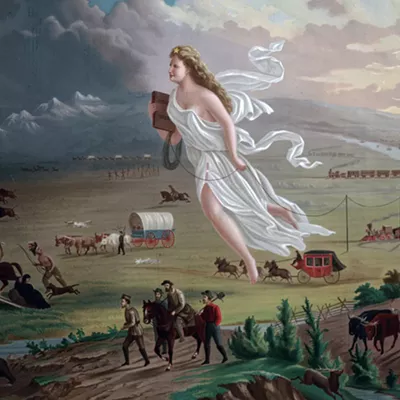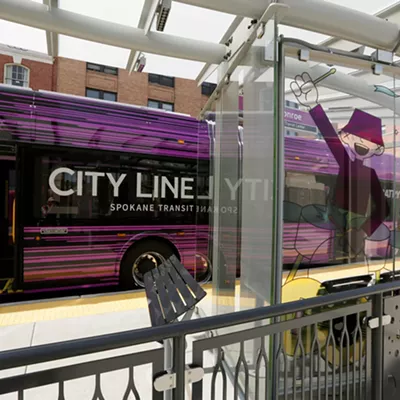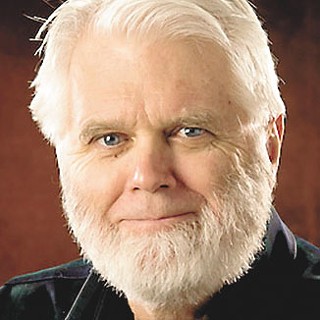Last week in this space, I looked into the STA's future, offering some obvious and long overdue fixes. But after receiving some feedback on the column, I'm realizing that the STA's mission is probably a better place to start. My earlier suggestions included a fleet of small buses, more routes, free downtown service, ridding the buses of that ugly wraparound advertising and making bus stops more user-friendly, both in the form of bus shelters and advertising-free bus benches where necessary. The intent of these fixes is to expand ridership.
This issue of mission, however, can get dicey. Still, here goes: Does Spokane need a mass transit system that has appeal to the middle and upper-middle classes?
There it is. The "class" word.
In a conversation I had last week with City Councilman Al French, who is also the chairman of the STA Task Force, he didn't use that word exactly. Instead he made reference to the need for the STA to design the transit system that "Spokane needs." But when pressed, he acknowledged that, presently, the STA has reduced the concept of public mass transit to a bus service designed for use by people who have no other means of transportation, i.e., the working poor.
Clearly, to build a healthy transit authority, we should add to this reservoir of customers. But the bus service that I described in last week's column -- large buses, few routes, darkened windows, cheap advertising -- is a bus service that operates on the assumption that the STA operates in a seller's market. In the process, of course, those who have no other choices are expected to put up with inconvenience and those darkened, ugly, over-scaled buses, and STA passes on the good reports they receive from this captive ridership. Oh, well.
But to appeal to people who have options, the STA will have to come up with an entirely new approach to public transportation, an approach that relies on those smaller buses, goes to more places, more often, and does so with attractive vehicles. To increase ridership, STA must take into consideration the factor of class, and that won't be easy.
We needn't stop there. The Comprehensive Plan, which embraces so many ideas that have flowed out of the "New Urbanism," calls for a "Centers and Corridors" form of development. This plan won't have a chance unless the STA develops a multi-hub system complete with numerous stations from which the smaller buses can come and go. Around the stations, these "centers" can develop. There will be winners and losers, just as there were winners and losers more than a century ago when the railroads were laying track. Towns and cities that got the trains thrived; those that were bypassed were faced with a difficult future.
Light rail holds the most promise for station development as a precursor to center development. Critics argue that present demand for light rail doesn't exist. But an identical argument can be made against the north-south freeway construction. Yet leaving the highway issues aside, light rail, at any time during maybe the next two to three decades, must be built, if it is to be built, "ahead of demand" -- as was every railroad ever built. Out West, demand followed the laying of track and the building of the stations. Likewise will be the case in and around Spokane if -- and this is still a big "if" -- the Comprehensive Plan turns out to have any integrity at all.
In the interim, some progress can be made with express buses (of the large variety). These new "hubs" could then be used to transfer passengers to smaller buses that make local stops. Centers would, as with light rail, form around the hubs.
As such a new system is developed there may well be some dislocation. Some of the "corridors" routes may not receive the coverage they do now, as the express buses drive on by to the new hubs. Such a change will have implications for the class issue.
And as STA examines these options, it must consider an even broader, more fundamental question: Here in Spokane -- this smallish city of next-to-no serious traffic problems -- can a system of mass transit be designed that has appeal to the middle and upper-middle class? And can that appeal be made with a system that is designed to be compatible with the Comprehensive Plan?
A rhetorical question: What correlation do we find between income bracket and ridership? Yet this correlation could change, if the system itself changes -- even granted that automobile transit remains painless and parking relatively inexpensive.
Many urban areas have constructed mass transit systems that appeal to the middle and upper-middle class. These same urban areas typically support the form of development pattern called for by Comprehensive Plan. But can the necessary conditions be discovered in Spokane? Or are we left only with the obvious and non-systemic Band-Aid improvements that I advanced in last week's column?
Comments? Write to letters@inlander.com
Publication date: 06/05/03

















